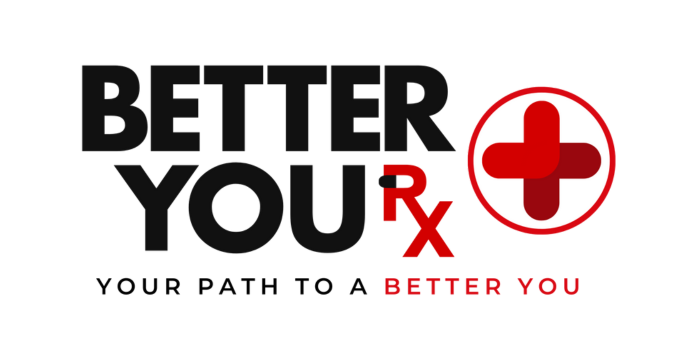Understanding the Causes of Migraines
Migraines are more than just severe headaches. They are a complex neurological condition that can severely impact the quality of life for millions of people worldwide. While many associate migraines with intense head pain, the reality is that the causes of migraines are multifaceted and involve a combination of genetic, environmental, and lifestyle factors. In this article, we will explore the various factors that contribute to the development of migraines and provide a deeper understanding of why they occur.
What is a Migraine?
A migraine is a type of headache that is often accompanied by other symptoms such as nausea, vomiting, and heightened sensitivity to light, sound, or smells. Unlike tension headaches, which generally cause a dull, persistent ache, migraines typically come with intense, throbbing pain, often on one side of the head.
There are several different types of migraines, with the most common being migraine without aura and migraine with aura. A migraine with aura involves visual disturbances, such as flashing lights or blind spots, which can occur before or during the headache phase.
Genetic Factors and Family History

One of the primary causes of migraines is genetics. Research has shown that migraines tend to run in families, suggesting that people with a family history of migraines are more likely to experience them. Specific genetic mutations may increase the sensitivity of the brain to triggers, making certain individuals more prone to developing migraines.
The inheritance pattern of migraines is complex, meaning that multiple genes may play a role in their development. While it is still not fully understood how genetics contribute to migraines, studies suggest that certain genes may affect how the brain processes pain signals, increasing susceptibility to migraine attacks.
Neurovascular Factors
Migraines are believed to originate from abnormal brain activity that affects both the brain’s blood vessels and the nerve pathways involved in pain processing. During a migraine, the brain undergoes electrical changes that cause the release of certain chemicals, such as serotonin, which can lead to the constriction and dilation of blood vessels in the brain. This change in blood flow may be responsible for the pain and other symptoms associated with migraines.
In addition, neuroinflammation, or inflammation of the nerve cells in the brain, has been linked to migraines. This inflammation can cause the brain to become more sensitive to stimuli, leading to an increased likelihood of a migraine attack.
Hormonal Fluctuations
Hormonal changes are another significant factor in the onset of migraines, particularly in women. Many women experience migraines in relation to their menstrual cycle, often referred to as menstrual migraines. These migraines typically occur just before or during menstruation, when levels of the hormone estrogen fluctuate. The drop in estrogen levels before menstruation can trigger a migraine in those who are susceptible.
Pregnancy and menopause can also influence the frequency and severity of migraines. During pregnancy, many women report a decrease in migraine attacks, especially in the second and third trimesters, as hormone levels stabilize. However, menopause, which involves significant hormonal changes, can lead to an increase in migraines for some women.
Environmental and Lifestyle Triggers

While genetics and biology play a significant role in the development of migraines, external factors can also act as triggers. These triggers vary from person to person, but some of the most common environmental and lifestyle factors that can lead to a migraine include:
- Stress: Emotional and physical stress are among the most common migraine triggers. Stress activates the body’s “fight or flight” response, leading to the release of stress hormones like cortisol, which can provoke a migraine.
- Sleep disturbances: Both insufficient sleep and irregular sleep patterns are known to contribute to the onset of migraines. People who suffer from poor sleep quality or sleep disorders, such as insomnia or sleep apnea, are more likely to experience migraines.
- Dietary triggers: Certain foods and beverages can trigger migraines in susceptible individuals. Common dietary triggers include:
- Caffeine
- Alcohol, particularly red wine
- Aged cheeses
- Processed meats containing nitrates
- Artificial sweeteners (such as aspartame)
- Monosodium glutamate (MSG)
- Dehydration: Lack of sufficient water intake can contribute to migraines. Dehydration can lead to an imbalance of electrolytes and exacerbate headache symptoms.
- Sensory overload: Bright lights, loud noises, strong smells, or flickering screens can overwhelm the senses and provoke migraines in some individuals. This is particularly true for people with a heightened sensitivity to stimuli.
- Weather changes: Changes in weather, such as temperature fluctuations, high humidity, or barometric pressure changes, are known to trigger migraines. These changes can affect the blood vessels and pressure in the brain, leading to a migraine attack.
- Medication overuse: Paradoxically, taking pain relievers too often can lead to “medication overuse headaches,” which are a type of secondary headache that can escalate into chronic migraines.
What’s the Difference Between a Headache and a Migraine?
While both a headache and a migraine can cause head pain, the two are different in several ways. A typical headache is often characterized by a mild to moderate, dull ache, while a migraine involves more severe, throbbing pain. Migraines may also cause nausea, vomiting, and sensitivity to light, sound, or smells, which is not typically seen with a regular headache. Additionally, migraines can last longer, sometimes up to several days, while headaches are usually short-lived.
Migraine Location: Where Does the Pain Occur?
The location of migraine pain can vary, but it is most commonly felt on one side of the head. Some individuals experience bilateral pain, meaning it affects both sides of the head. The pain is often described as throbbing or pulsating and may be accompanied by other symptoms such as nausea and sensitivity to light or sound.
What is a Complex Migraine?
A complex migraine refers to a type of migraine that is more severe and associated with additional neurological symptoms. These can include visual disturbances (like seeing flashing lights or blind spots), tingling or numbness in the limbs, difficulty speaking, or even temporary paralysis. Complex migraines can mimic the symptoms of a stroke, but they do not result in permanent neurological damage.
When a Migraine Won’t Go Away: What Should You Do?
Sometimes, a migraine may not respond to typical treatments or last longer than usual. If a migraine persists for more than 72 hours or worsens despite treatment, it is essential to seek medical help immediately. Prolonged migraines can lead to dehydration, malnutrition, and other health complications. In some cases, medication adjustments or alternative treatments may be necessary.
Why Do Migraines Cause Nausea?
Nausea is a common symptom of migraines and is thought to be due to the brain’s response to the pain and other sensory changes that occur during a migraine attack. The brain’s pain pathways also influence the gastrointestinal system, which can result in nausea and vomiting. This combination of symptoms is part of what makes migraines more debilitating than regular headaches.
Other Medical Conditions Linked to Migraines
Several underlying medical conditions have been associated with an increased risk of migraines. These conditions may either directly cause migraines or contribute to their frequency and severity. Some of the common conditions include:
- Chronic conditions: People with chronic conditions such as hypertension (high blood pressure), obesity, and fibromyalgia are more likely to experience migraines. These conditions can affect the body’s ability to manage pain and contribute to migraine development.
- Mental health conditions: Anxiety, depression, and other mood disorders have been linked to an increased incidence of migraines. Stress and emotional instability can trigger or worsen migraine attacks.
- Neurological conditions: People with certain neurological conditions, such as epilepsy, may be more prone to migraines due to shared pathways in the brain that influence pain perception and neural activity.
- Sleep disorders: As mentioned earlier, sleep disorders like insomnia and sleep apnea can increase the likelihood of experiencing migraines. Sleep disorders disrupt the body’s natural rhythm, making it more vulnerable to migraine triggers.
How the Brain Processes Pain in Migraines

The pain experienced during a migraine is thought to be the result of the brain’s misprocessing of pain signals. Typically, the brain regulates pain through specific neural pathways, but in people prone to migraines, these pathways may become hypersensitive or overactive.
The trigeminal nerve, a large nerve responsible for sensation in the face, plays a central role in migraine pain. During a migraine, this nerve is activated, releasing inflammatory substances that cause pain in the head and neck regions. The pain may be accompanied by other symptoms like nausea and vomiting due to the brain’s response to these inflammatory substances.
Conclusion
Migraines are complex and multifactorial, involving a combination of genetic, environmental, and lifestyle factors. Understanding the various causes of migraines can help individuals better manage the condition and reduce the frequency and severity of attacks. While there is no one-size-fits-all solution, identifying personal triggers, managing stress, and making lifestyle adjustments can go a long way in preventing migraines. Additionally, those who suffer from chronic migraines should consult with a healthcare provider to explore treatment options, including medication, therapy, and lifestyle modifications.
Migraines are not just headaches; they are a debilitating neurological condition with complex causes. By gaining a deeper understanding of these causes, we can take steps toward better management and ultimately improve the lives of those affected by this condition.





